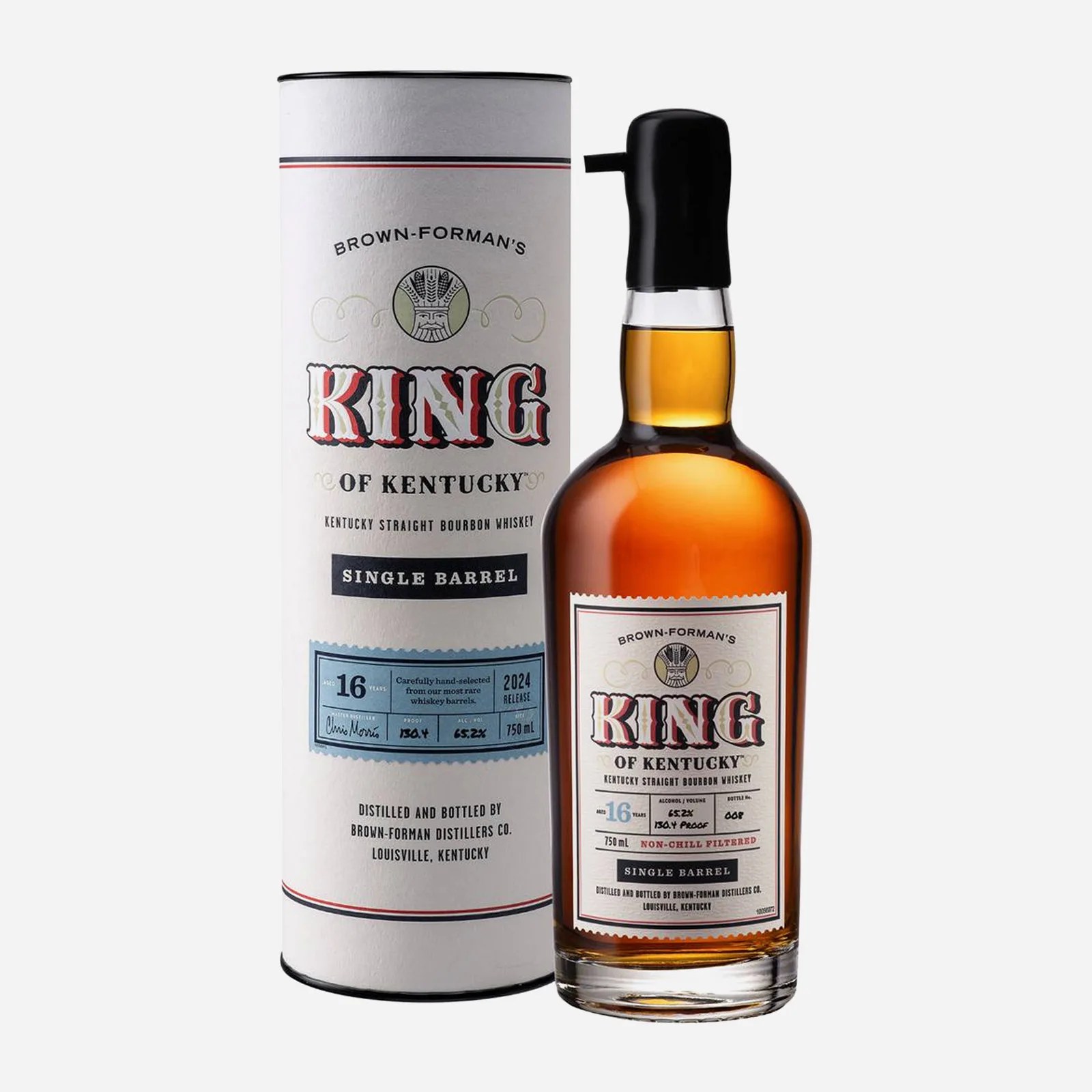Based on this fact, some knowledgeable industry insiders have strung a few intriguing dots together. The speculation goes something like this.
Early Times was a longstanding bourbon brand owned by Brown-Forman dating back to 1923. For a while, through the 30s, 40s, and 50s, it was the best-selling whiskey in the country. It also happens to be made from the same 79% corn, 11% rye and 10% malted barley recipe found in Old Forester 1924.
In 2018, Brown-Forman also revived the King of Kentucky brand, which it had owned since 1940 as a unique vehicle for ultra-premium bourbon releases defined by the “barrel-strength, minimally-filtered proof presentation” shipped in bottles defined by “personal craftsmanship” that were “wax-dipped, and numbered by hand with details including proof, age, warehouse location, lot number, serial number, and barrel number, all selected by Master Distiller Chris Morris.” King of Kentucky uses the same mash bill, too.

Reading between the lines, one could view the King of Kentucky project as a vehicle for Brown-Forman’s distilling team to highlight and showcase exceptional barrels buried among the company’s more extensive Early Times bourbon stock.
But what does this have to do with Old Forester 1924 again?

